Frances Edwina Dumm (1893 – April 28, 1990), known by her pen name Edwina, was a trailblazing figure in American cartooning. Born into a newspaper family in Sandusky, Ohio, she carved a remarkable career path as a writer and an artist. Notably, Dumm is celebrated for enduring contributions to the comic strip realm, particularly for her iconic creation, “Cap Stubbs and Tippie.” Beyond her acclaimed comic strip, she broke gender barriers as America’s first full-time female editorial cartoonist. Let’s delve into the life and legacy of this remarkable woman.
| Frances Edwina Dumm | |
|---|---|
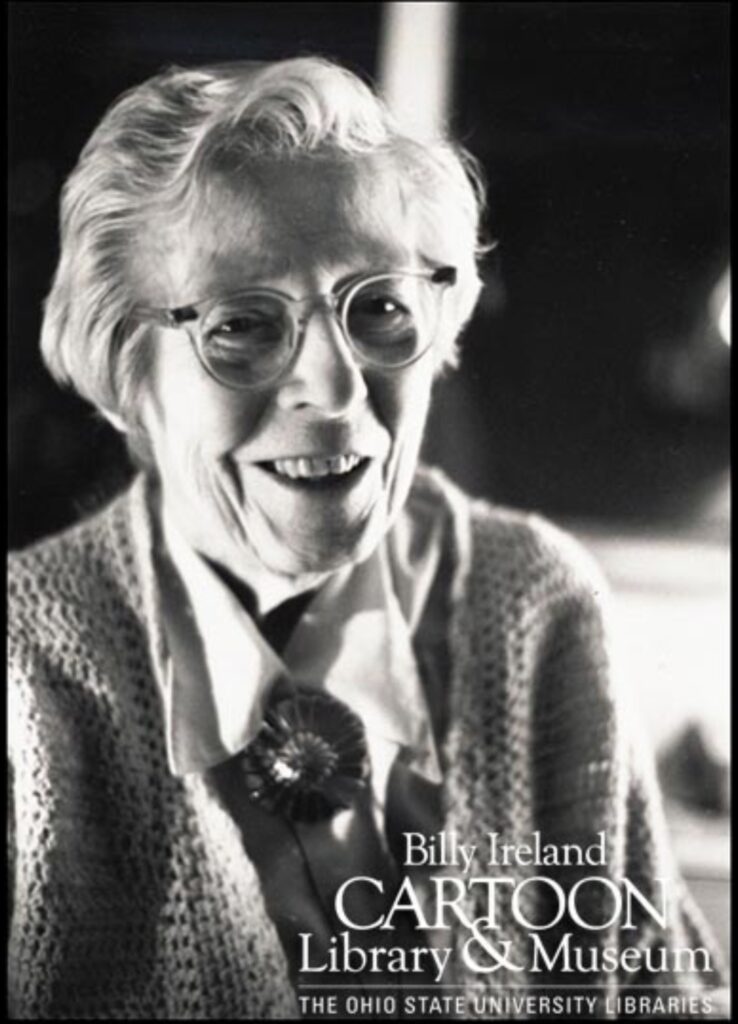 |
|
| Born | 1893 Upper Sandusky, Ohio, U.S. |
| Died | April 28, 1990 (aged 96–97) New York, New York, U.S. |
| Nationality | American |
| Area(s) | Cartoonist |
| Notable works | Cap Stubbs and Tippie (1918–1966) Alec the Great (1931-1969) |
| Awards | National Cartoonists Society Gold Key Award, 1978 |
Early Years and Education:
Born into a newspaper family in Upper Sandusky, Ohio, in 1893, Edwina Dumm’s artistic journey began to unfold against her familial ties to journalism. After graduating from Central High School in Columbus, Ohio, in 1911, she embarked on a career in cartooning, enrolling in the Landon School of Illustration and Cartooning correspondence course based in Cleveland.

Breakthrough in Cartooning:
Dumm’s talent and dedication soon caught the attention of the Columbus Monitor, a short-lived Republican newspaper, where she debuted as a full-time cartoonist in 1915. Here, she honed her craft, showcasing her versatility through features like “The Meanderings of Minnie” and “Spot-Light Sketches,” which often championed women’s issues and reflected the changing dynamics of American society.
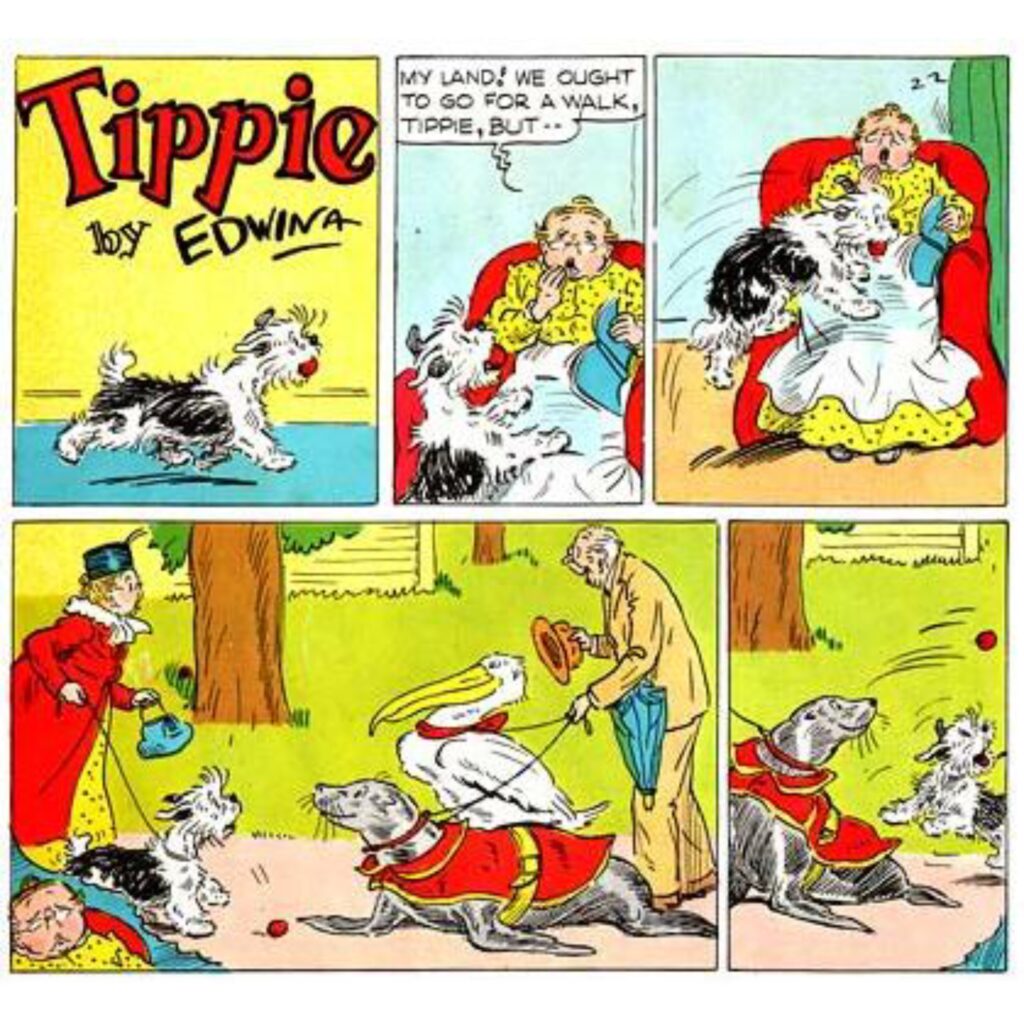
The Rise of “Cap Stubbs and Tippie”:
In 1918, Dumm’s career trajectory took a significant turn when the George Matthew Adams Syndicate recruited her to create a comic strip centered around the adventures of a boy and his dog. Thus, “Cap Stubbs and Tippie” was born, captivating audiences with its endearing characters and timeless storytelling. Dumm’s love for dogs and rapid artistic prowess contributed to the strip’s enduring popularity.

Artistic Influence and Collaboration:
Throughout her illustrious career, Dumm’s creative output extended beyond the confines of comic strips. She illustrated books and magazines and even collaborated with her brother, Robert Dennis Dumm, on the newspaper feature “Alec the Great.” Their collaborative efforts bore fruit in the form of a published book and further solidified Dumm’s reputation as a versatile and prolific artist.
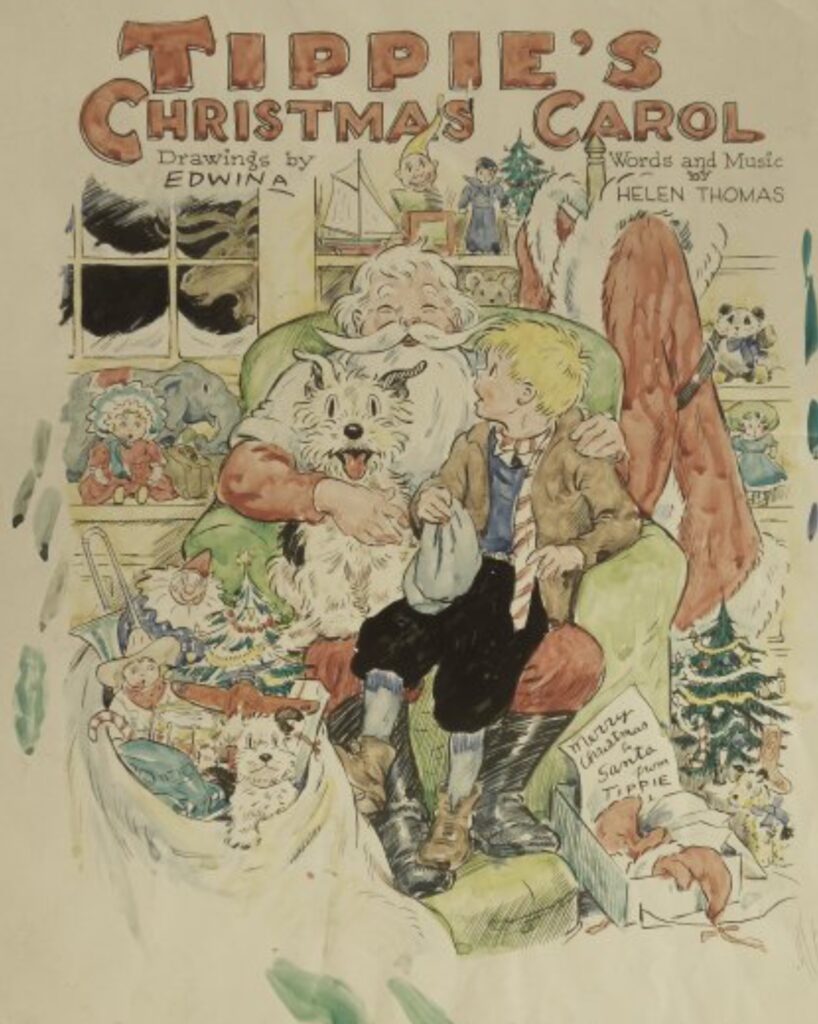
Recognition and Legacy:
In 1950, Dumm, alongside fellow cartoonists Hilda Terry and Barbara Shermund, made history as the first woman to be inducted into the National Cartoonists Society. Her contributions to the world of cartooning were further honored with the National Cartoonists Society Gold Key Award in 1978, a testament to her enduring influence and legacy.
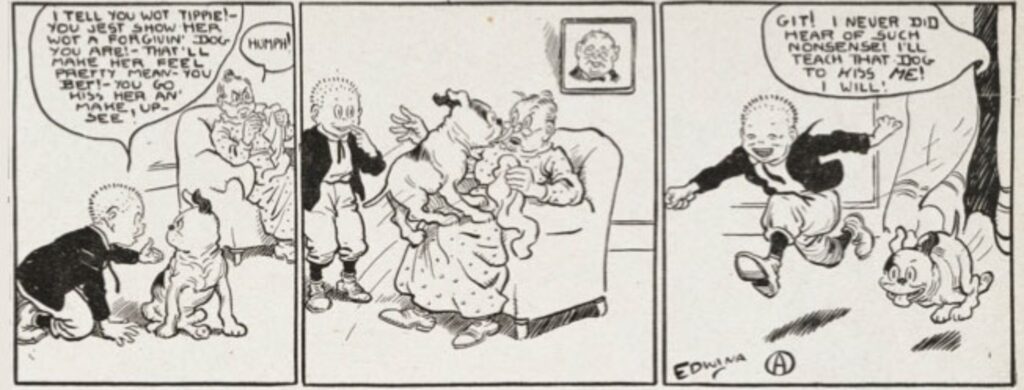
Later Years and Beyond:
Even after she retired from “Cap Stubbs and Tippie” in 1966, Dumm remained an active and vibrant presence in the artistic community. Her passion for watercolor paintings and photography and her commitment to serving older people underscored her unwavering dedication to creativity and compassion.
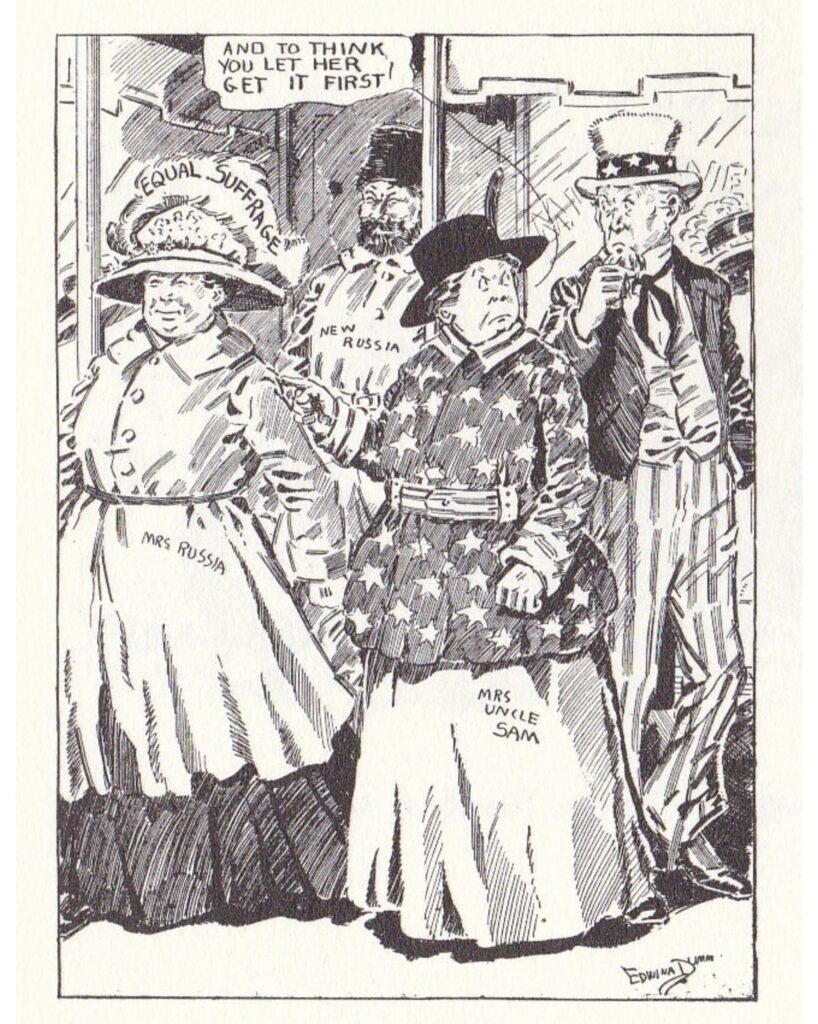
Conclusion:
Frances Edwina Dumm’s remarkable journey serves as an inspiration to aspiring cartoonists and artists alike. From her humble beginnings in Ohio to her trailblazing achievements as a pioneering female cartoonist, Dumm’s legacy continues to resonate, reminding us of the transformative power of art and storytelling.
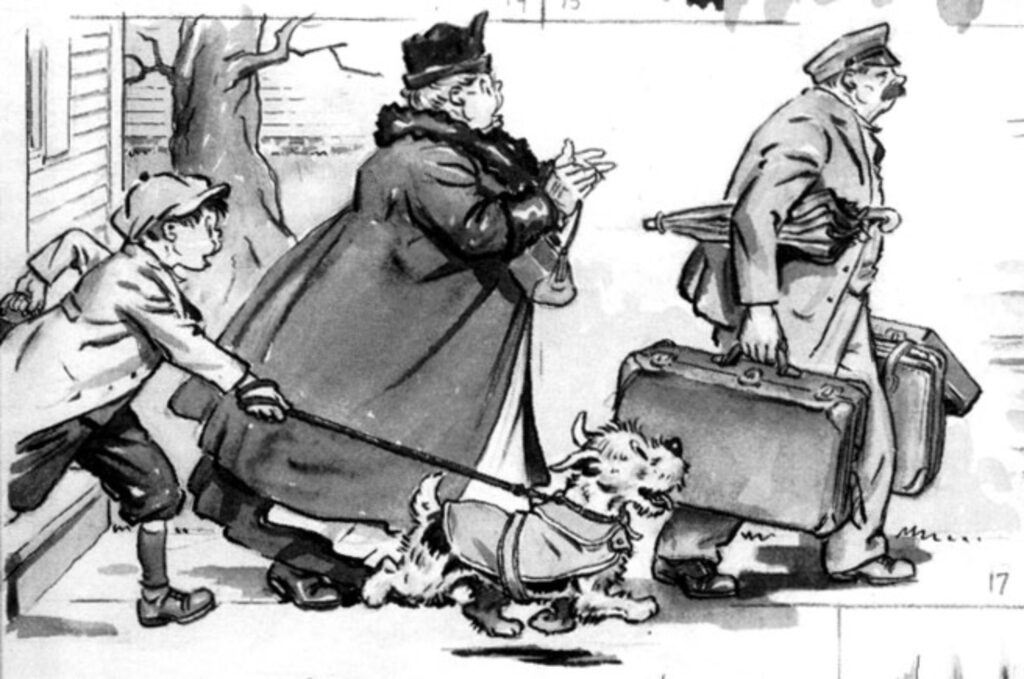
Exhibitions and Recognition:
Dumm’s contributions have been commemorated through exhibitions such as the 2012 digital exhibition curated by Lucy Shelton Caswell, ensuring that her legacy endures for generations to come.
Gallery
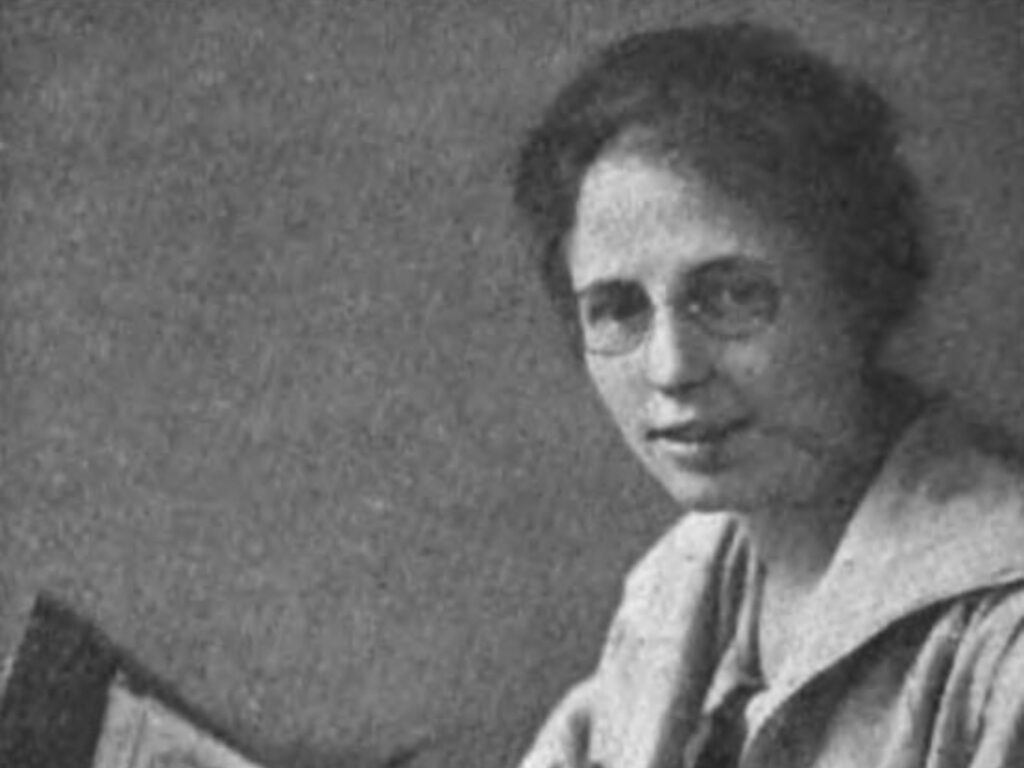







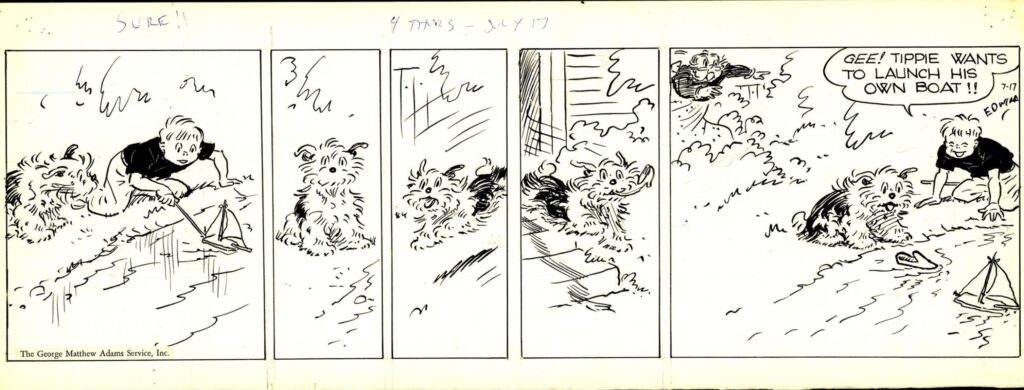
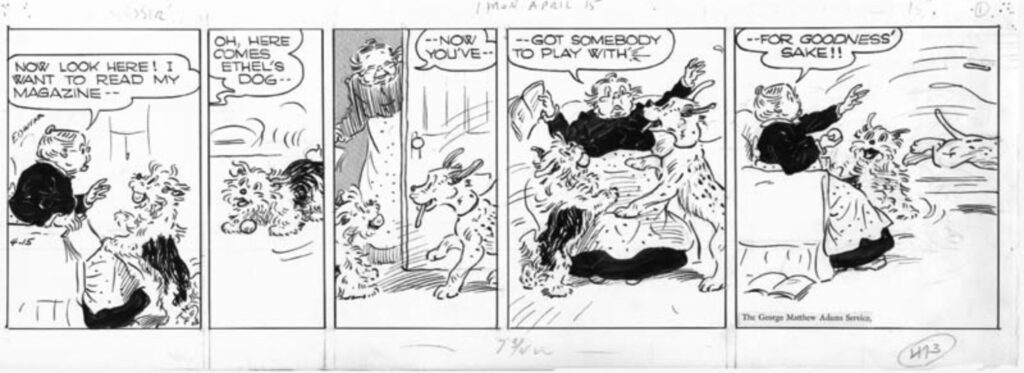

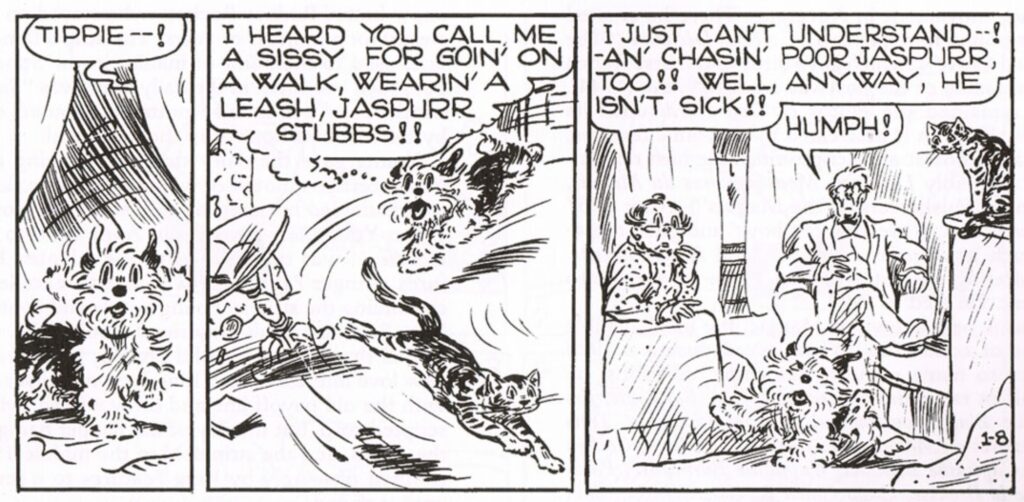
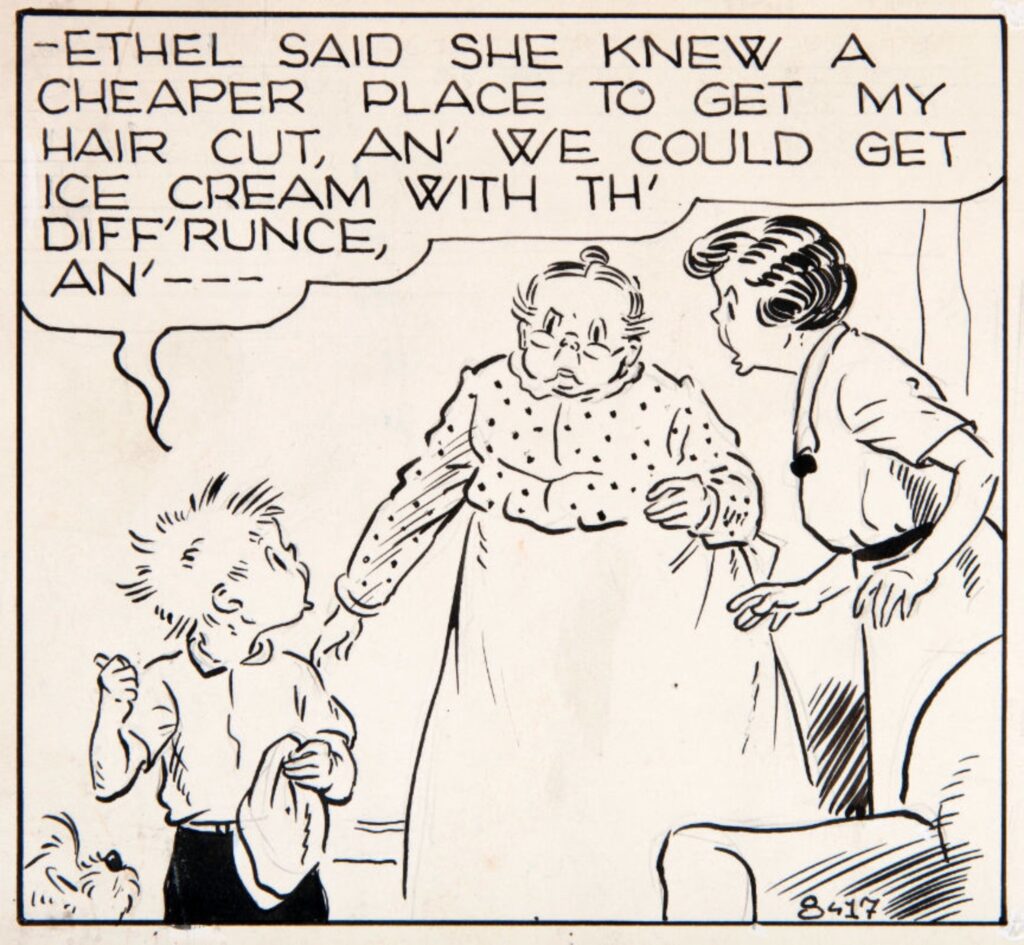
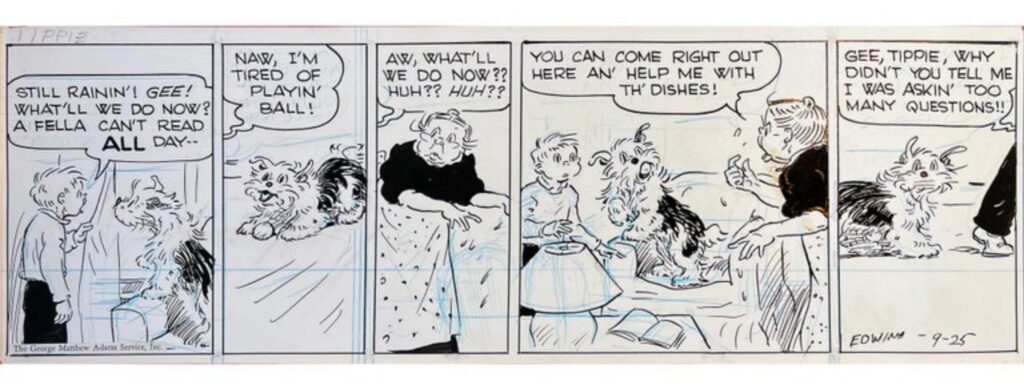
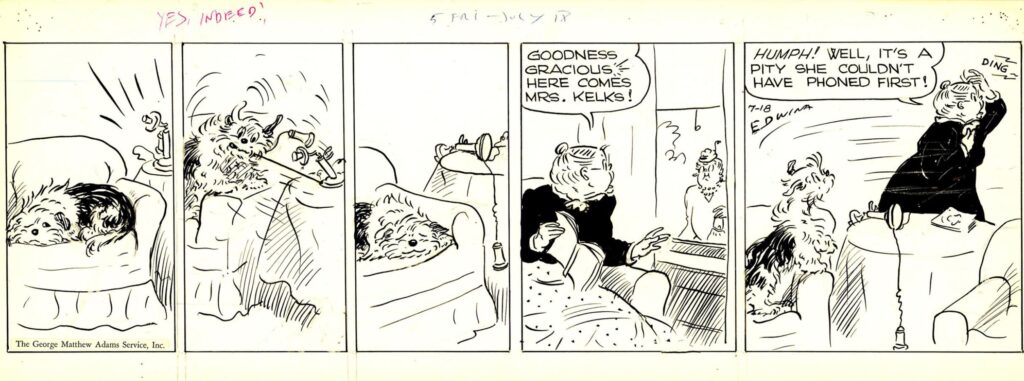
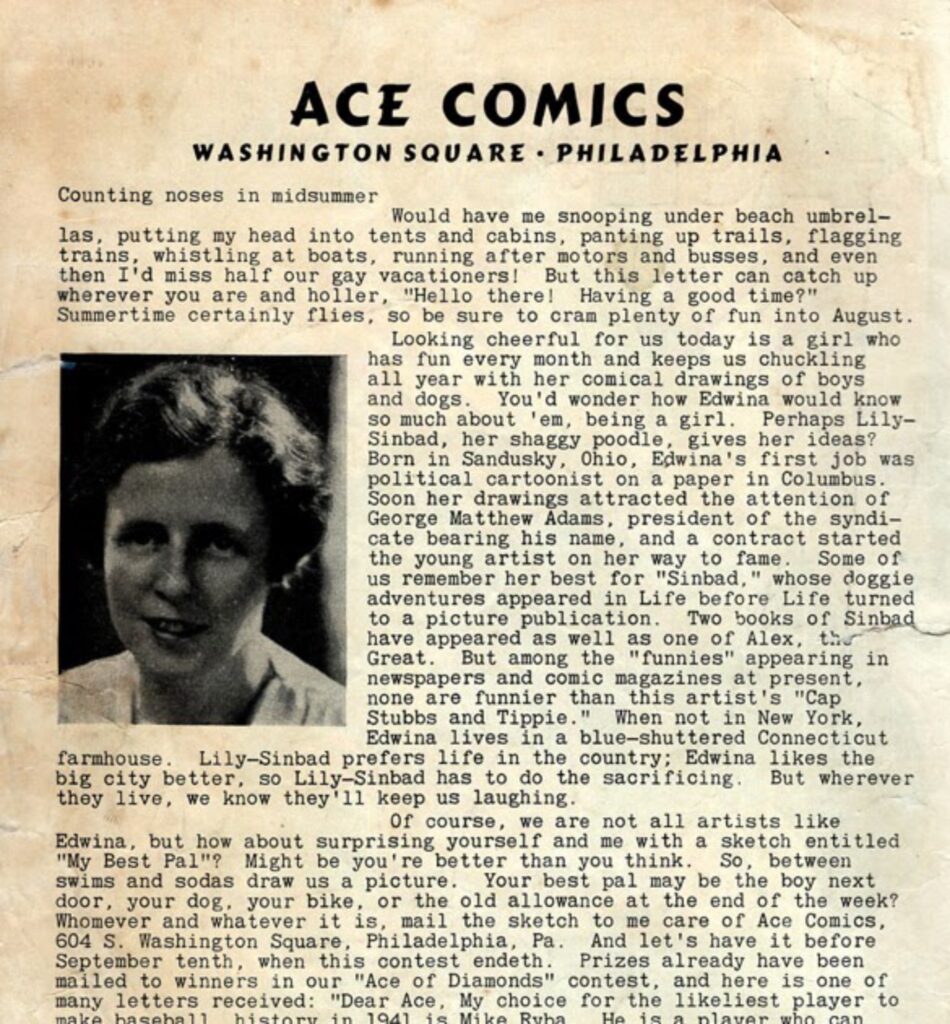


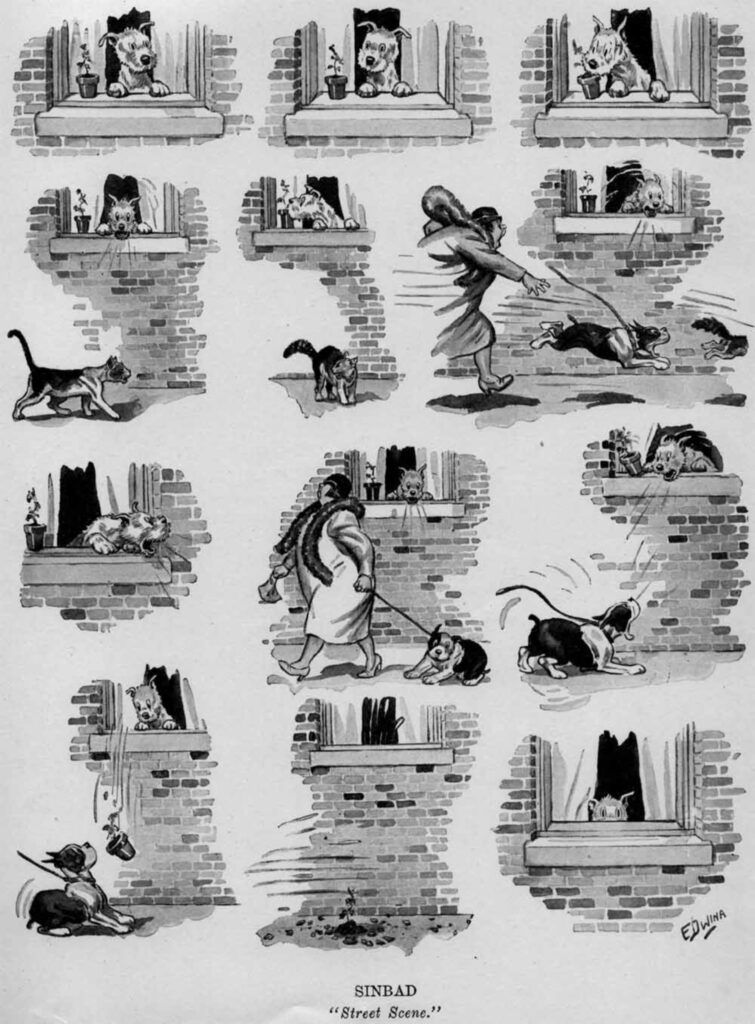
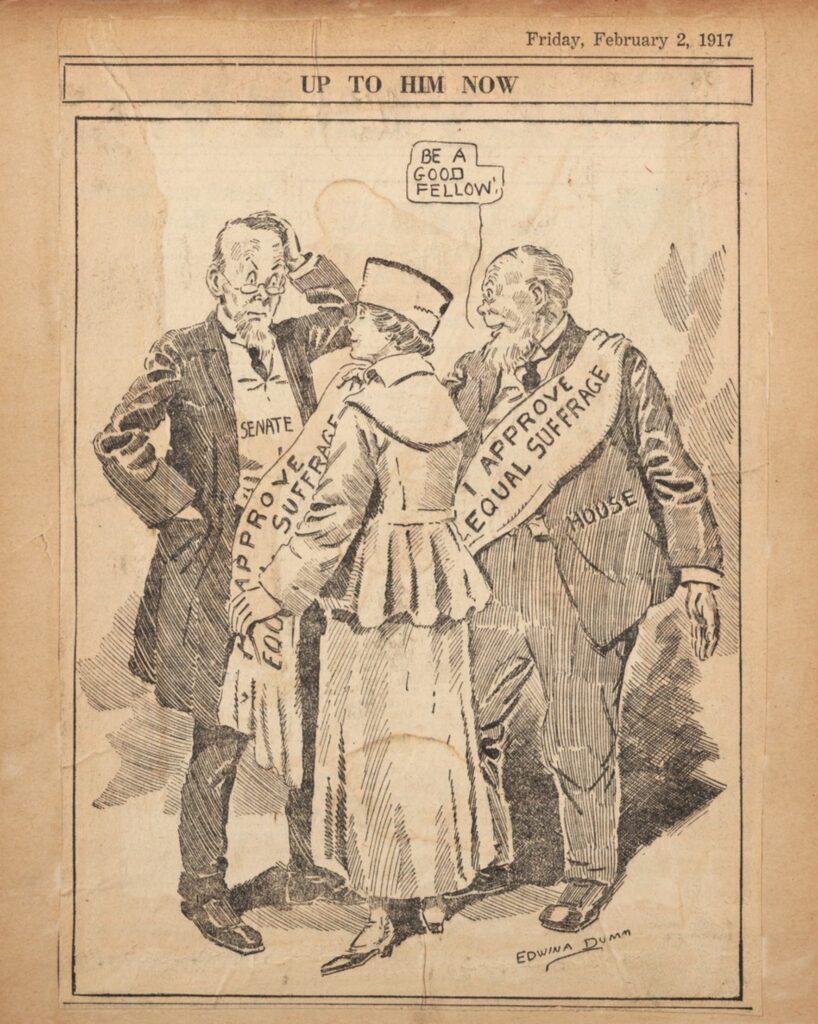
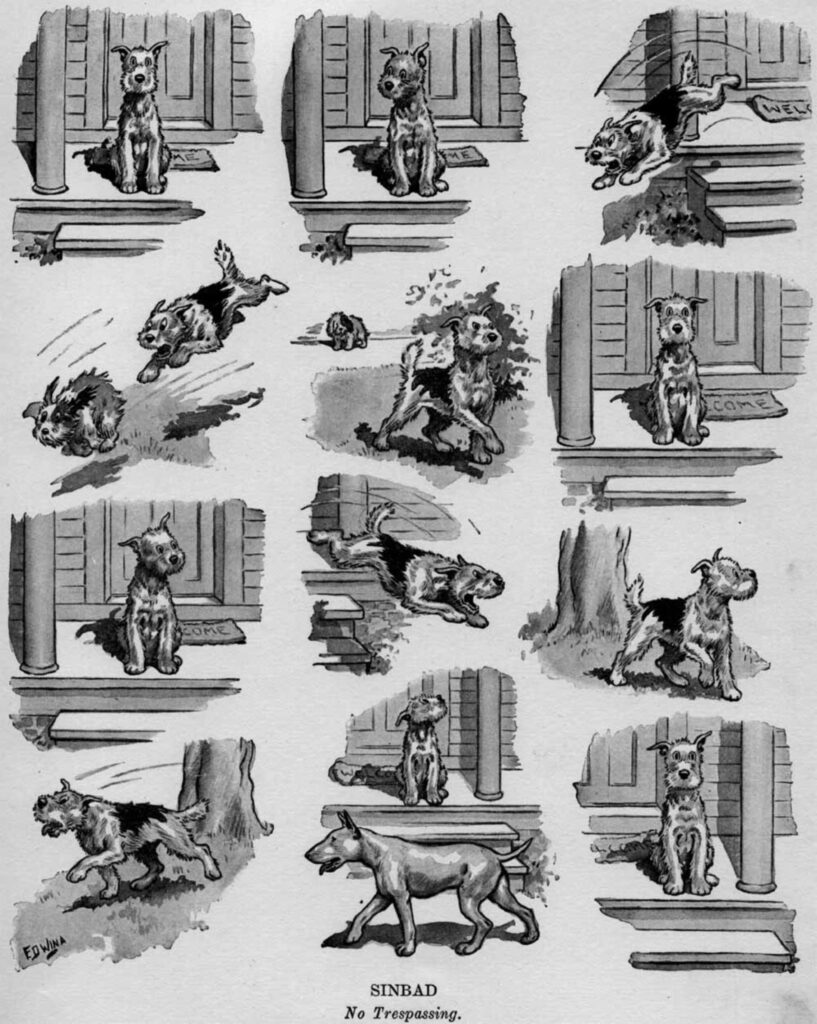
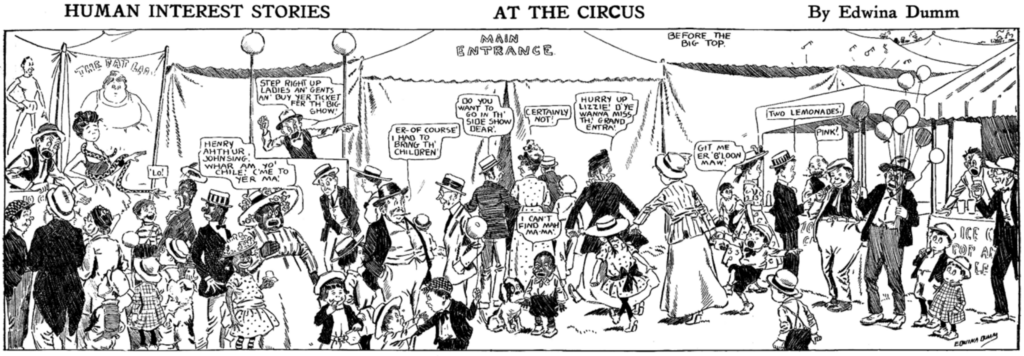
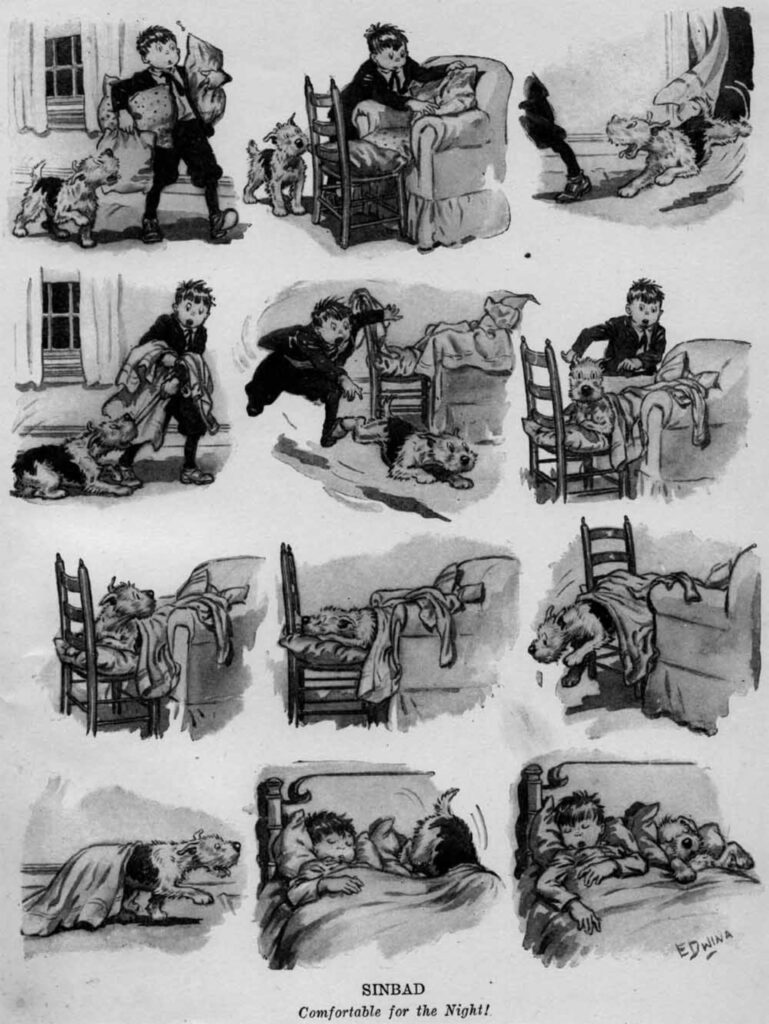
Read also
- Elmer Simms Campbell (1906–1971): Pioneering African-American Cartoonist and Cultural Icon
- Eric Godal (Erich Goldbaum) (1898–1969): A Pioneering German Cartoonist’s Journey Through Turbulent Times
- The Pioneering Work of Winsor McCay in Early Animation: A Journey into the Birth of Animated Artistry
- Professor Otto and His Auto (1902): A Pioneering Journey through the World of Early Comic Strips
FAQs about Frances Edwina Dumm
Who was Frances Edwina Dumm?
Frances Edwina Dumm, born in 1893, was an American writer-artist known for creating the comic strip “Cap Stubbs and Tippie” and as America’s first full-time female editorial cartoonist.
What was her signature name on her comic strip?
She used her middle name for the signature on her comic strip, signing simply as Edwina.
What were her notable works?
Dumm’s notable works include “Cap Stubbs and Tippie” (1918–1966) and “Alec the Great” (1931-1969).
Where are the original drawings of her comics housed?
Original drawings for Dumm’s comics are housed in the Ohio State University Library for Communications and Graphic Arts.
What was her contribution to women’s art movements?
Dumm’s art and other female cartoonists contributed to visual rhetoric that helped create a more favorable climate for change in America’s gender relations.
Was Dumm involved in any other forms of illustration?
Dumm illustrated various books, magazines, and newspaper features, including a weekly dog page called “Sinbad” for Life and the London Tatler.
Did she receive any awards for her work?
Yes, she received the National Cartoonists Society Gold Key Award in 1978, being the only woman to win this award until 2013.
Was Dumm involved in any exhibitions?
Yes, a digital exhibition curated by Lucy Shelton Caswell in 2012 showcased Dumm’s work.
What was Dumm’s personal life like?
Dumm never married. After retiring from her comic strip, she remained active with watercolor paintings, photography, and helping older people in her New York City apartment building.
Where did Dumm pass away?
Frances Edwina Dumm died on April 28, 1990, in New York City, U.S., at 96–97.
This post was created with our nice and easy submission form. Create your post!





One Comment